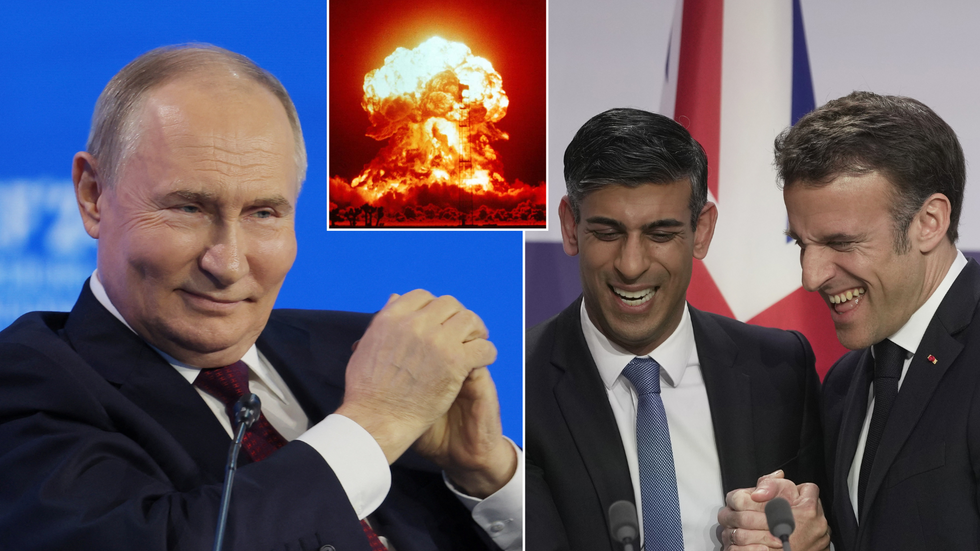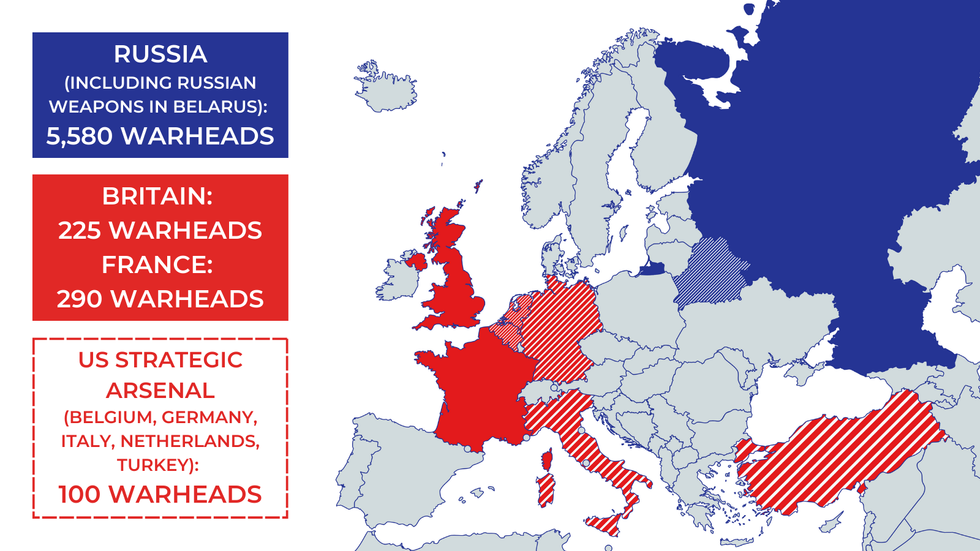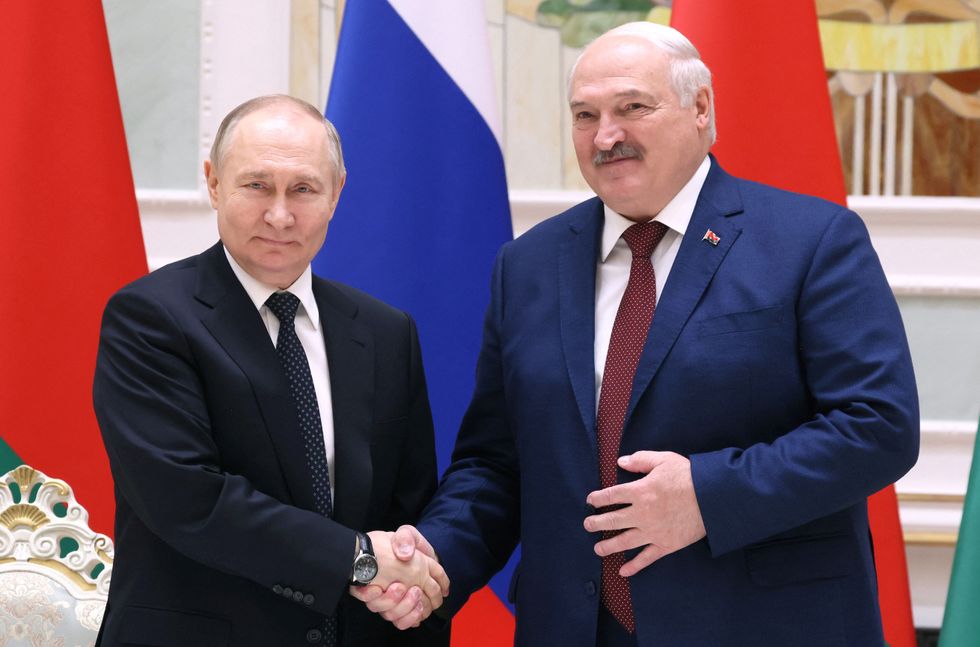Putin issues chilling threat as he claims Europe 'defenceless and unprepared for nuclear war'
Russia has 'many more tactical nuclear weapons than there are on the European continent - even if the United States brings theirs over', Putin warned
Don't Miss
Most Read
Trending on GB News
Vladimir Putin has slammed Europe as "defenceless" against his near-5,000-strong atomic arsenal as fears over his willingness to press the nuclear button continue to mount.
Talking up his stockpile at a forum in St Petersburg, the 71-year-old premier sounded bullish as he took pot-shots at the West's ballistic back-catalogue, even including American nuclear weapons in his criticism in a scathing address to delegates.
Putin said Russia had "many more [tactical nuclear weapons] than there are on the European continent - even if the United States brings theirs over".
He continued: "Europe does not have a developed [early warning system]... In this sense, they are more or less defenceless."

Putin took aim at Europe's nuclear arsenal - filled out by just Britain and France without taking American missiles into consideration
Reuters/PA/Wikimedia Commons
In Europe, only Britain and France maintain their own nuclear stockpiles - which pale in comparison to the arsenals upheld by Cold War adversaries the US and Russia.
Combined, the UK and France have approximately 225 and 290 warheads at their respective disposals - while the US maintains a tactical arsenal of around 100 in five European countries: Belgium, Germany, Italy, the Netherlands and Turkey.
And despite treaty-induced walk-backs from their 20th-Century peaks - when the world stage played host to tens of thousands of nuclear weapons - the Federation of American Scientists still puts the global total at approximately 12,100, of which more than 10,000 belong to the US and Russia.
But the sheer scale of the destruction any deployment of these arsenals would yield hasn't stopped the Russian premier's sabre-rattling.
READ MORE ON PUTIN'S THREATS:
- Putin reveals latest 40ft-nuke missile that can launch from hidden subs and carries 10 warheads
- World War 3 warning: Russia issues clearest provocation yet after Putin orders nuclear testing - 'You can't hide!'
- 'No way of shooting down Putin's missiles' ex-general warns as Russia could aim 600mph weapons at Britain

Europe's approximately 600-strong nuclear arsenal represents a paltry 11 per cent of Russia's stockpile
GB News
Just weeks ago, Putin's forces announced the start of a set of wide-ranging nuclear drills - which Russia's foreign ministry said would "cool the hot heads in Western capitals".
That announcement followed the news that French President Emmanuel Macron had floated the possibility of sending European troops to fight Moscow in Ukraine, and the UK's Foreign Secretary Lord Cameron said Kyiv had the right to use British weapons to strike targets inside Russia.
Analysts said the drills were a warning signal by Putin to deter the West from wading more deeply into the war in Ukraine.
But today, Belarus said its army was taking part in a new second stage of Russian exercises - which its Defence Minister Lieutenant General Viktor Khrenin said were a proactive measure to "increase our readiness to use so-called retaliatory weapons".

Putin and Belarusian leader Alexander Lukashenko had announced last year that Russia was moving some of its tactical nuclear weapons to Belarus
Reuters
He said: "Now, more than ever before, we are determined to respond to any threats posed to both our country and the Union State" between Russia and Belarus.
Putin and Belarusian leader Alexander Lukashenko announced last year that Russia was moving some of its tactical nuclear weapons to Belarus. These are warheads designed for use on the battlefield, as opposed to long-range strategic weapons intended to wipe out entire enemy cities.
Some Western analysts believe tactical nuclear weapons have acquired greater importance in Moscow's thinking since the start of the war in Ukraine, where its conventional forces struggled in the first two years.
In theory, the use of such a weapon could deliver a stunning shock to the West without necessarily prompting a full-blown nuclear war, though the risk of triggering a cycle of escalation would be huge.








